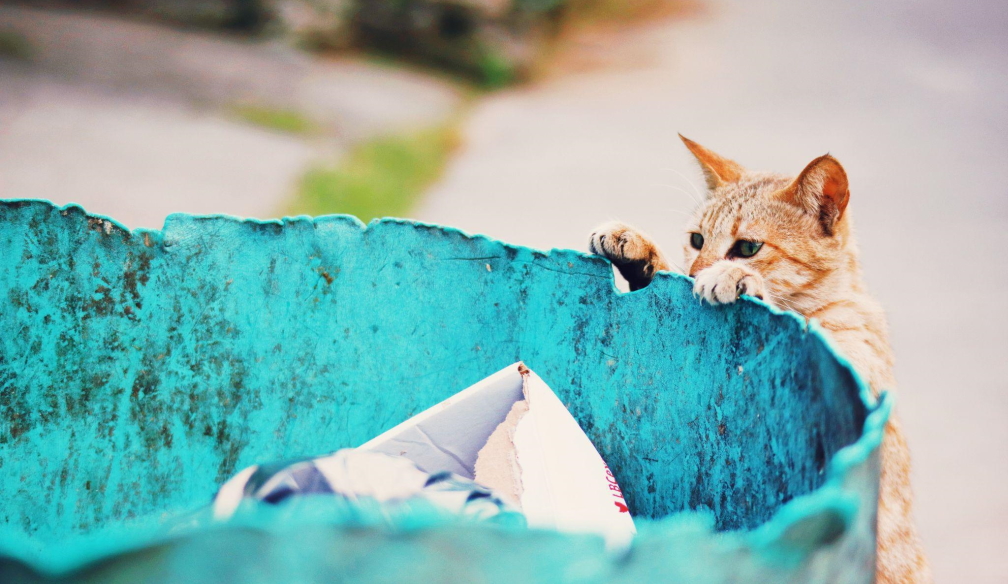How to Safely Catch a Feral or Stray Cat

If you're a cat lover and want to help feral (unsocialized) or stray (lost) cats, one way to do so is by trapping them. This allows you to take them in, spay/neuter them, and release them back into their original environment where they can continue their lives as wild animals. While this may sound like an odd thing for someone who loves cats, it's actually one of the best ways to protect these animals' well-being while also giving people who want pets a second chance at keeping felines in their homes. Here's how!
Use caution when handling traps and feral cats.
Be careful when handling traps and feral cats.
-
Use gloves. Feral cats are more likely to bite than their domesticated counterparts, so it's best to use gloves when moving the trap and handling a trapped cat.
-
Use a towel to pick up the trap. When you're transporting your new pet home (or wherever it needs to go), put the wrapped cat inside of an appropriately sized carrier or cage so that you don't have to hold it with your bare hands all day long—and risk getting bitten yourself.
Block the cat's escape routes.
Make sure your trap is in a quiet, secluded place where other humans won't be disturbed by the cat's cries and you won't be disturbed by onlookers who may want to help or hinder your efforts (some people think it can be cruel or dangerous to trap cats).
Covering the trap with a towel will help keep your cat calm while they wait for you to return with food and water so they don’t have time to think about being trapped and panic (which might make them more likely not to go inside when they see it).
Set up traps and bait them.
To catch a feral cat, you'll need to set up traps. The best kind of trap is a live trap. You can find these at your local pet store or searching online for nearest shop locations and online shops in your area, like ‘cat traps New South Wales’.
A live trap should be placed in a quiet area where there are no other animals around (there's nothing worse than accidentally trapping your neighbor's pet). Covering the trap with a towel or blanket will help keep the cat calm and give it privacy as well. Once you've put out the food inside the cage, wait for them to come!
If you're not sure how much food is too much, err on the side of caution when baiting your trap until you get more experience with these types of animals.
Create a safe place for trapped cats.
Once you've trapped a feral cat, you'll need to keep her safe until she's ready for adoption. A crate or box will work best because it will allow your cat to see what's going on around her, but not feel exposed and vulnerable. The box should be large enough for the cat to move around comfortably, but small enough that she can't walk out of it if she tries. Consider covering the crate with a towel or blanket so that your feral friend has some privacy during this stressful time. You may also want to place something soft at the bottom of the crate (like an old t-shirt) in case your cat pees while being transported back home.
Transfer the cat to a carrier or cage.
Use a carrier or cage to transport the cat. Do not use a towel or blanket to trap the cat. This can make it harder for you to remove them safely from their cage later on. Also, keep in mind to never leave them in traps for long periods of time as it may become stressful and dangerous for both you and your cat.
Release or relocate the cat outdoors.
Many feral and stray cats are not comfortable living in homes, so you should not keep a cat that can't be tamed or socialized. If you want to help stray cats, consider adopting one from your local shelter or fostering a cat for an animal rescue group.
Release or relocate the cat outdoors as soon as possible after trapping it. The longer a feral/stray stays in captivity, the harder it will be for them to adapt to living outdoors again; some may never adjust at all.
Don't release an injured feline into its natural habitat unless it has been seen by a veterinarian first; doing so will put both yourself and other animals at risk if this animal is carrying diseases like rabies which could potentially spread throughout other populations if left unchecked!
Catching a cat is only the first step to taming it, having it neutered, and rehoming it.
Catching a cat is the first step to taming it, having it spayed/neutered, and rehoming it. Catch-and-release is the best option for feral cats—but if you can't catch the cat, you won't be able to help it.
Although many people think that taming a feral cat is impossible because they are too wild, this is not true. You can tame an unadoptable or outdoor cat by catching it and keeping it indoors until she falls asleep (or passes out from exhaustion). It may take several tries to get her into a relaxed state; don't worry if she gets away from you once or twice during your attempts as this will make her less stressed in future attempts at taming her.
Conclusion
Once you’ve captured a feral or stray cat, the next step is to care for it until you can find it a home. You can do this by trapping it in a cage and medicating it, taking care of its wounds and injuries and then releasing it back into the wild once they’ve healed completely.



